While ultrasound is frequently associated with obstetrics and monitoring mothers and babies throughout pregnancy, ultrasound technology is becoming more and more applicable to other fields of medicine as well. As more applications are discovered and utilized, learning Point of Care Ultrasound (POCUS) at a Maverick Medical Education course will allow you to better serve your communities, in whatever setting you find yourself. The use of ultrasound in cardiac medicine is merely one of the ways medical professionals are better able to monitor and diagnose their patients.
1. Indications – Not every scenario needs ultrasound. Cardiac ultrasound should be utilized when the patient is experiencing dizziness, shortness of breath, hypotension, chest pain or palpitations, or significant EKG changes. Additional indications would be cardiac arrest, to assess left ventricular function, and to diagnose new heart murmurs.
2. Positioning – Your patient should be laying flat on the exam table with no elevation of the head, in a supine position. You may need to allow the patient to lay slightly on their left side, propping with pillows or blankets if the assessment will take more than a short time.
3. Machine Preparation – In most cases, your image indicator will be on the left side of the screen. To properly image the heart, your image indicator needs to be on the right side of the screen.
4. Orientation – Refamiliarize yourself with the anatomy of the heart and the overall location of the heart in relation to the rest of the body. Even medical professionals sometimes forget how close to the sternum the heart is actually located.
5. Begin Views – There are a number of steps you will want to follow to complete a cardiac ultrasound. Each step should be completed before moving to the next, taking time to record all measurements and to assess function along the way.
6. Diagnose – In some cases it will be very clear what the patient is experiencing or needs for the best care. Other times it may be important for you to discuss findings with another POCUS user or medical professional to make sure findings are consistent. You may also need to allow the patient to be fully assessed with a formal echo from someone with more experience. If a diagnosis is clear, you can make a treatment plan and communicate that with your medical team and your patient.
7. Reassess – One of the many benefits of POCUS is the portability and ease to monitor cases as they are developing. As ultrasound is a non-invasive and non-harmful imaging tool, medical teams can view their patients to see if a condition is getting better or worsening, or to see if medical treatment is progressing as expected.
If you are ready to learn more about all of the applications Point of Care Ultrasound may have for your medical practice, contact us today. We offer courses throughout the year to learn this technology. The benefits for you and your patients are numerous. See our course calendar to sign up for the next available course.

